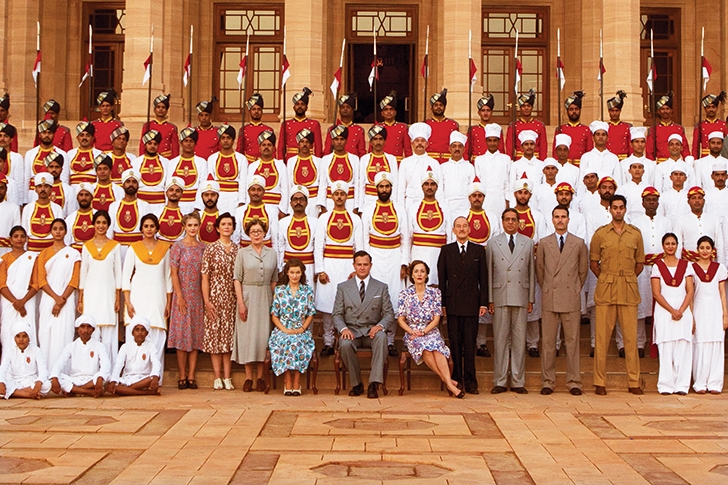Gurinder Chadha’s modern comedies have fun with cultural divides. Girls kick footballs in Bend It Like Beckham. A gaggle of Punjabis hit Blackpool in Bhaji on the Beach. Jane Austen goes to Bollywood in Bride & Prejudice. In all these films (we may discount Angus, Thongs and Perfect Snogging), Indians and Britons grapple with the knotty ongoing project of mutual comprehension.
But there are only so many perky scripts anyone can shoot about multiculturalism. In Viceroy’s House Chadha spools back 70 years to Partition, when the price of India’s independence from her colonial master was to be sundered in two, unleashing what remains the planet’s largest ever migration of refugees. It may not sound like Chadha’s sort of caper but, as is revealed in the closing credits, her grandparents were among those 14 million on the move in 1947.
Chadha confines her historical epic to the official residence of the final viceroy. Lord Dickie Mountbatten (Hugh Bonne-ville), receiving one of the 20th century’s greatest hospital passes, arrives togged up like a well-meaning cockatoo and proceeds to bumble through the independence negotiations with India’s foxlike leading politicos. Along for the ride are his helpmeet Edwina (Gillian Anderson), whose core duty is to stiffen Dickie’s spine and, in this chaste telling, keep her hot hands off Nehru.
It’s not all about the doings of state. The titular residence (shot in the maharajah’s palace in Jodhpur) bustles with staff from all corners of the subcontinent. Hindus, Sikhs and Muslims cook, guard, serve and, more than anything, eavesdrop on the nabobs deliberating their future. They form a squabbling microcosm of India’s vast simmering cauldron. The leading players in the schismatic below-stairs drama are a pair of star-crossed lovers, a Muslim and a Hindu (Huma Qureshi and Manish Dayal), whose romantic plotline builds to a shattering climax that nods to Doctor Zhivago and Les Enfants du Paradis.








Comments
Join the debate for just £1 a month
Be part of the conversation with other Spectator readers by getting your first three months for £3.
UNLOCK ACCESS Just £1 a monthAlready a subscriber? Log in